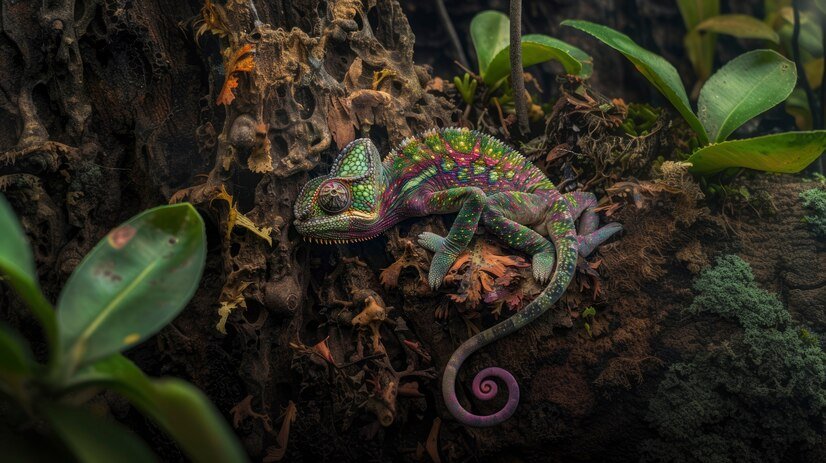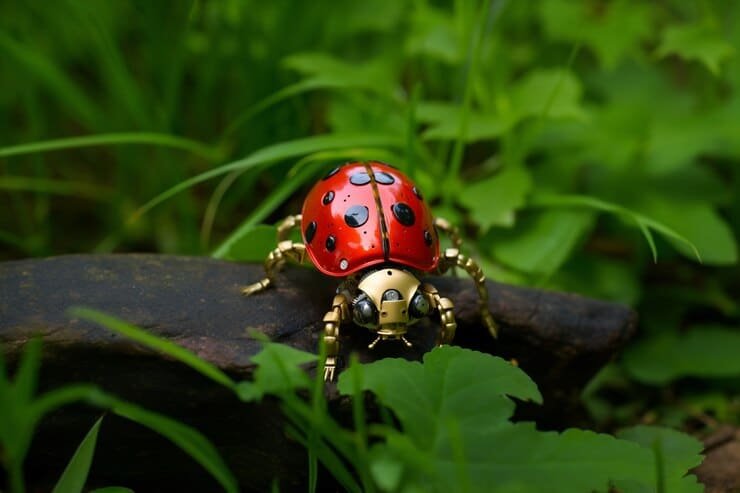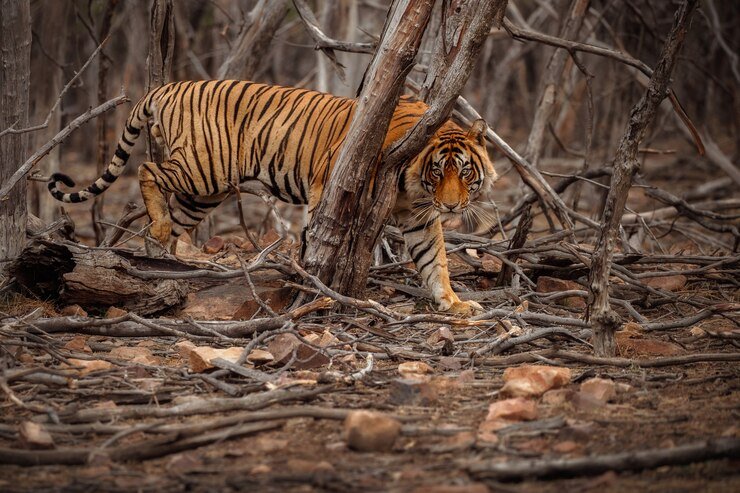Welcome to our comprehensive guide on jungle animals, where we explore the captivating world of wildlife in the rainforest. Jungles are vibrant ecosystems teeming with diverse species, each playing a unique role in the intricate web of life. From the majestic predators like tigers and pythons to the enchanting birds like toucans and macaws, the jungle is a treasure trove of fascinating creatures.
In this guide, we will delve into the behaviors, habitats, and roles of jungle animals within their ecosystem. We will uncover the secrets of jungle mammals, birds, reptiles, insects, and even explore the intricate body parts that contribute to their survival. Join us on this exciting journey as we unveil the wonders of wildlife in the jungle.
Key Takeaways:
- Jungles are biodiverse ecosystems with a wide variety of animals.
- From predators like tigers and pythons to herbivores like tapirs and antelopes, the jungle houses a rich diversity of wildlife.
- Jungle mammals, such as tigers, elephants, and gorillas, play important roles in the food chain and ecosystem balance.
- Jungle birds, like toucans and macaws, add color and vibrancy to the jungle environment.
- Jungle reptiles, including anacondas and caimans, bring a sense of danger and intrigue to the jungle ecosystem.
- Jungle insects, such as butterflies and fireflies, play crucial roles in pollination and nutrient cycling.
Also Read : Unleashing Potential With Heights Finance – Your Trusted Partner
Types of Jungle Mammals
Jungle mammals are an essential part of the vibrant ecosystem found in the world’s jungles. From powerful predators to intelligent primates, these creatures have unique behaviors, habitats, and conservation statuses that make them fascinating to study. Let’s explore some of the iconic jungle mammals:
Also Read : Join Energizing Group Exercise Classes Today For Healthy Fun!
Tigers
Known for their striking beauty and strength, tigers are apex predators found in various jungle habitats. With their distinctive orange fur and black stripes, they are perfectly adapted for stealthy hunting. Unfortunately, tigers are classified as endangered due to habitat loss and poaching.
Elephants
The largest land mammals, elephants play a crucial role in shaping the jungle ecosystem. They are known for their intelligence, social bonds, and remarkable memory. Elephants aid in seed dispersal and tree regeneration, making them vital to the overall health of the jungle. However, they face threats such as illegal poaching and habitat destruction.
Also Read : Understanding Dx11 Feature Level 10.0 A Comprehensive Guide
Gorillas and Primates
Gorillas, along with other primates like chimpanzees and bonobos, are found in the lush jungles of Africa. These gentle giants are known for their complex social structures and striking similarities to humans. Their presence in the jungle ecosystem contributes to seed dispersal and vegetation management. However, increased deforestation and hunting pose significant challenges to their survival.
| Jungle Mammal | Conservation Status |
|---|---|
| Tigers | Endangered |
| Elephants | Endangered |
| Gorillas | Critically Endangered |
| Chimpanzees | Endangered |
| Bonobos | Endangered |
It is vital to protect these incredible jungle mammals and their habitats through conservation efforts and sustainable practices. By doing so, we can ensure that future generations can continue to marvel at their beauty and appreciate their crucial role in maintaining the delicate balance of the jungle ecosystem.
Also Read : Understanding Bright’s Disease: Causes, Symptoms & Treatments
Types of Jungle Birds
Jungle birds are a vibrant and captivating part of the diverse wildlife found in the jungle ecosystem. With their colorful plumage and unique behaviors, they add beauty and intrigue to the lush rainforest environment. From the iconic toucans with their large, colorful bills to the majestic macaws with their brilliant feathers, jungle birds are a sight to behold.
One of the most fascinating aspects of jungle birds is their diverse range of beak shapes and sizes. For example, the toucan’s large bill is not only visually striking but also serves a practical purpose. It allows them to reach fruits and berries that are otherwise out of reach for other birds. Similarly, the hornbill has a unique casque, which helps amplify its calls and serves as a display during courtship.
Also Read : Share Your Voice With One Opinion – Friendly & Trustworthy Platform
Jungle birds also exhibit interesting nesting habits. Parrots, for example, construct their nests in tree cavities, using sticks and leaves to create a cozy and secure space for their eggs. Some species of macaws even use their powerful beaks to excavate their nesting holes in tree trunks. These adaptations showcase the resourcefulness and ingenuity of jungle birds.
Jungle Bird Species
Here are some examples of popular jungle bird species:
- Toucan: Known for their colorful bills and distinctive vocalizations, toucans are iconic jungle birds.
- Macaw: With their vibrant plumage and strong beaks, macaws are among the most colorful and charismatic jungle birds.
- Hornbill: Recognized by their casques and unique calls, hornbills are fascinating birds found in the jungle.
- Parrot: Parrots are highly intelligent birds known for their ability to mimic human speech and their vibrant feathers.
These are just a few examples of the incredible variety of jungle birds that inhabit rainforests around the world. Exploring the world of jungle birds is an exciting adventure that reveals the beauty and complexity of the jungle ecosystem.
Types of Jungle Reptiles

Jungle reptiles are a captivating and diverse group of creatures that have adapted to thrive in the dense vegetation and aquatic habitats of the jungle ecosystem. From the mighty anaconda to the stealthy caiman, these reptiles play important roles in maintaining the balance of the jungle ecosystem. Let’s explore some of the fascinating jungle reptiles: the anaconda, boa constrictor, iguana, and caiman.
Table: Characteristics of Jungle Reptiles
| Reptile | Length | Habitat | Feeding Habits |
|---|---|---|---|
| Anaconda | Up to 25 feet | Swamps and rivers | Carnivorous, preys on fish, birds, and mammals |
| Boa Constrictor | Up to 13 feet | Tropical forests and grasslands | Carnivorous, preys on small mammals and birds |
| Iguana | Up to 6 feet | Trees and forest floor | Herbivorous, feeds on leaves, fruits, and flowers |
| Caiman | Up to 8 feet | Rivers and wetlands | Carnivorous, preys on fish, amphibians, and small mammals |
The anaconda is one of the largest snakes in the world, capable of reaching lengths of up to 25 feet. It is a powerful constrictor and primarily feeds on fish, birds, and mammals. The boa constrictor, though slightly smaller, is also an impressive predator that inhabits tropical forests and grasslands.
On the other hand, the iguana is a herbivorous reptile that can grow up to 6 feet in length. It is known for its vibrant colors and is commonly found in trees and the forest floor. Lastly, the caiman, a relative of the alligator, inhabits rivers and wetlands, and is an adept hunter, feeding on fish, amphibians, and small mammals.
These fascinating jungle reptiles showcase the incredible diversity and adaptations within the reptile group. From the stealthy movements of the anaconda to the herbivorous diet of the iguana, each reptile plays a crucial role in the delicate balance of the jungle ecosystem.
Understanding and appreciating the importance of jungle reptiles allows us to recognize the intricate web of life in the jungle and the need for their conservation. By protecting their habitats and raising awareness about their unique characteristics, we can contribute to the long-term survival of these remarkable creatures and the overall health of the jungle ecosystem.
Types of Jungle Insects

Jungle insects may be small in size, but they play crucial roles in the intricate web of the jungle ecosystem. From colorful butterflies to industrious ants, and from camouflaged praying mantises to glowing fireflies, these insects contribute to pollination, decomposition, and nutrient cycling. Let’s explore the fascinating world of jungle insects and discover the wonders they bring to the rainforest.
Butterflies
One of the most captivating jungle insects is the butterfly. With vibrant colors and delicate wings, butterflies are not only a sight to behold but also important pollinators. Their feeding habits and flower preferences make them efficient agents of pollination, ensuring the survival and reproduction of many plant species in the jungle. Some butterfly species, such as the iconic monarch butterfly, even undertake incredible migratory journeys spanning thousands of miles.
Ants
Ants are known for their remarkable social behavior and remarkable strength. These tiny creatures form complex colonies and work tirelessly to maintain their nests and forage for food. Their role in the jungle ecosystem goes beyond their industrious nature – ants also play a crucial role in seed dispersal. By carrying seeds to new locations, ants contribute to the growth and diversity of plant populations in the jungle.
Praying Mantises
Praying mantises are fascinating predators of the jungle. Their unique body structure and camouflage abilities make them excellent ambush hunters. With their specialized front legs, they can quickly snatch unsuspecting prey. Praying mantises are also known for their cannibalistic tendencies, with females sometimes consuming males after mating. These intriguing insects are important contributors to the control of pest populations in the jungle ecosystem.
Fireflies
Fireflies bring a touch of magic to the jungle with their mesmerizing bioluminescent displays. These beetles produce light through a chemical reaction in their bodies, using it to attract mates and communicate. Fireflies play a vital role in the jungle ecosystem by acting as bioindicators. Changes in their populations and behavior can provide valuable insights into the overall health of the environment.
Table: Diversity of Jungle Insects
| Insect | Common Characteristics | Role in the Jungle Ecosystem |
|---|---|---|
| Butterflies | Vibrant colors, delicate wings | Pollination, seed dispersal |
| Ants | Complex colonies, social behavior | Seed dispersal, soil aeration |
| Praying Mantises | Ambush hunters, camouflage | Predation, pest control |
| Fireflies | Bioluminescent displays | Bioindicators, communication |
Jungle Animal Body Parts
Understanding the body parts of jungle animals can provide insights into their specific adaptations. Each body part serves a unique purpose in the survival and reproduction of jungle animals. From the bill of a hornbill to the casque on the head of a cassowary, and from the carapace of an armadillo to the talons of an eagle, these specialized features help animals thrive in their respective habitats.
One remarkable example is the bill of a hornbill, which is well-suited for foraging in the dense vegetation of the jungle. The bill is large and curved, allowing the hornbill to reach deep into tree cavities and extract prey. In addition to its functional purpose, the bill is also visually striking and plays a role in courtship displays.
Another fascinating body part found in the jungle is the casque on the head of a cassowary. This prominent structure is made of keratin, similar to a horn or beak. While the exact function of the casque is still debated, it may serve as a resonating chamber for vocalizations or help protect the head during fights with other cassowaries.
| Animal | Body Part | Function |
|---|---|---|
| Hornbill | Bill | Foraging, courtship displays |
| Cassowary | Casque | Resonating chamber, head protection |
| Armadillo | Carapace | Protection from predators |
| Eagle | Talons | Capturing prey, gripping branches |
The carapace of an armadillo is another noteworthy adaptation in the jungle. This hard, armored structure provides protection from predators. Armadillos can curl into a ball, exposing only their armored back, making it difficult for predators to harm them.
Lastly, the talons of an eagle showcase incredible strength and precision. An eagle’s talons are curved and sharp, enabling it to capture and hold onto prey effectively. These mighty claws also play a crucial role in gripping branches as the eagle soars through the jungle canopy.
Overall, the body parts of jungle animals are finely tuned for their specific roles in the ecosystem. Whether it’s a bill for foraging, a casque for communication, a carapace for protection, or talons for hunting, each adaptation contributes to the survival and success of these remarkable creatures.
The Rich Biodiversity of the Amazon Rainforest
The Amazon rainforest is renowned for its incredible biodiversity, making it one of the most biologically diverse places on Earth. Within this vast and lush ecosystem lies Yasuni National Park, a region that showcases the richness and complexity of the Amazon rainforest’s wildlife. The combination of diverse habitats, abundant plant life, and favorable climate creates the perfect conditions for an astonishing array of species to thrive.
Yasuni National Park is home to an astounding number of plant and animal species, many of which are found nowhere else on the planet. From the vibrant red macaws flying through the canopies to the elusive jaguars prowling through the undergrowth, every corner of the park is teeming with life. It is estimated that Yasuni National Park contains more tree species in a single hectare than all of North America, and it shelters approximately 600 bird species, including the iconic Harpy Eagle.
Diversity Highlights:
| Species | Number of Species |
|---|---|
| Mammals | 400+ |
| Amphibians | 600+ |
| Reptiles | 1,000+ |
| Birds | 1,500+ |
Exploring the Amazon rainforest’s biodiversity is like stepping into a real-life adventure. It’s a world filled with unique creatures and extraordinary adaptations, each playing a vital role in the delicate balance of the ecosystem. From colorful poison dart frogs to enormous anacondas, the rainforest is a treasure trove of natural wonders.
Preserving the rich biodiversity of the Amazon rainforest, particularly in areas like Yasuni National Park, is of paramount importance for the long-term survival of countless species. It is crucial that we continue to prioritize conservation efforts and sustainable practices to safeguard this invaluable natural heritage for generations to come.
Threats to Jungle Animals

Jungle animals face a multitude of threats that jeopardize their survival and the delicate balance of the ecosystem. Deforestation, habitat loss, and illegal hunting are some of the major challenges that these animals confront in their natural habitats.
The rampant deforestation occurring in many jungle regions is resulting in the destruction and fragmentation of vital habitats. As trees are cleared for agriculture, logging, and urbanization, the homes and food sources of jungle animals are being destroyed, displacing species and disrupting their natural behaviors.
Habitat loss is further exacerbated by human encroachment and infrastructure development, which further fragments and isolates the remaining patches of jungle. This isolation restricts the movement and gene flow of jungle animals, making them more vulnerable to extinction.
“The destruction of jungle habitats not only threatens individual species, but it also disrupts the intricate web of interactions that sustain the entire ecosystem.”
Illegal hunting, driven by the demand for exotic animal products and bushmeat, poses another significant threat to jungle animals. Poaching for fur, body parts, and live specimens pushes many species to the brink of extinction. The loss of these animals can have cascading effects on the ecosystem, as they often play vital roles in seed dispersal, pollination, and controlling prey populations.
| Threats | Impact |
|---|---|
| Deforestation | Loss of habitat, displacement of species, disruption of ecosystem functions |
| Habitat Loss | Fragmentation, isolation, restricted movement, increased vulnerability to extinction |
| Illegal Hunting | Species decline, disruption of ecological roles, potential extinction |
Addressing the Threats
To protect jungle animals and their habitats, concerted conservation efforts are crucial. This includes implementing measures to combat deforestation, such as sustainable logging practices, reforestation initiatives, and strict regulations on land conversion. Protected areas and wildlife reserves can also provide safe havens for jungle animals to thrive and maintain healthy populations.
Educating local communities and raising awareness about the importance of wildlife conservation is key to curbing illegal hunting. Supporting alternative livelihoods and promoting sustainable practices can help reduce demand for wildlife products and decrease the pressure on jungle animals.
By addressing these threats and taking proactive steps to protect jungle animals, we can safeguard the incredible biodiversity and ecological balance of these unique ecosystems for future generations.
Conservation of Jungle Animals
Jungle animals are an integral part of our planet’s incredible biodiversity. The conservation of these animals is of utmost importance to ensure their survival and maintain the ecological balance of their habitats. Wildlife conservation efforts focus on protecting jungle animals and their natural habitats, promoting sustainable practices, and raising awareness about the value of biodiversity.
One key aspect of conservation is the establishment of protected areas and national parks. These designated areas provide a safe haven for jungle animals, allowing them to thrive without disturbance from human activities. Protected areas also contribute to the preservation of crucial habitats and help maintain the delicate balance of the jungle ecosystem.
Furthermore, wildlife conservation organizations play a crucial role in protecting jungle animals. These organizations work tirelessly to monitor animal populations, combat illegal hunting and trafficking, and implement conservation initiatives. They also engage in educational programs to raise awareness about the importance of preserving wildlife and promote sustainable practices among local communities.
Habitat protection is another crucial component of jungle animal conservation. By safeguarding the natural habitats of these animals, we can ensure that they have the resources they need to survive and reproduce. Conserving jungle habitats also benefits other species and contributes to the overall health of the ecosystem.
Conservation Success Story: The Sumatran Tiger
The Sumatran tiger (Panthera tigris sumatrae) is a critically endangered species found only in the jungles of Sumatra, Indonesia. With an estimated population of fewer than 400 individuals, this magnificent big cat is on the verge of extinction.
Efforts to conserve the Sumatran tiger have been ongoing for decades. Conservation organizations have been working closely with local communities and the Indonesian government to protect tiger habitats, combat illegal poaching and logging activities, and raise awareness about the importance of tiger conservation.
These efforts have yielded some positive results. The establishment of protected areas such as the Tesso Nilo National Park has provided a safe haven for tigers and other endangered species. Increased anti-poaching patrols and stricter law enforcement have helped reduce the illegal trade in tiger parts. Education and community outreach programs have also played a vital role in fostering a sense of stewardship among local communities, encouraging them to support tiger conservation efforts.
While challenges still remain, the conservation initiatives for the Sumatran tiger serve as an inspiring example of how concerted efforts can make a difference in saving endangered species and preserving the biodiversity of our precious jungles.
| Organization | Mission | Website |
|---|---|---|
| World Wildlife Fund (WWF) | To conserve nature and reduce the most pressing threats to the diversity of life on Earth. | worldwildlife.org |
| Wildlife Conservation Society (WCS) | To save wildlife and wild places worldwide through science, conservation action, education, and inspiring people to value nature. | wcs.org |
| Panthera | To ensure the future of wild cats through scientific leadership and global conservation action. | panthera.org |
Importance of Jungle Animals in the Ecosystem
Jungle animals are an essential component of the intricate web of life in the ecosystem. Their presence and activities contribute to the overall health and balance of the jungle environment. From pollination to seed dispersal and maintaining ecological processes, jungle animals play vital roles in the survival and sustainability of the ecosystem.
The biodiversity of jungle animals ensures the diversity of plant species through pollination. Bees, butterflies, and hummingbirds are just a few examples of jungle animals that aid in the transfer of pollen from one flower to another, enabling plant reproduction and the production of fruits and seeds. Without these animal-assisted processes, many plant species would struggle to survive, resulting in a significant loss of biodiversity.
Jungle animals also help in seed dispersal, which is vital for the regeneration and expansion of plant populations. Birds, monkeys, and other animals consume fruits and disperse the seeds through their droppings, allowing new plants to grow in different areas of the jungle. This dispersal mechanism ensures genetic diversity and helps plants colonize new habitats.
| Jungle Animals’ Roles in the Ecosystem | Examples |
|---|---|
| Pollination | Bees, butterflies, hummingbirds |
| Seed Dispersal | Birds, monkeys |
| Nutrient Cycling | Insects, decomposers |
| Regulating Prey Populations | Predatory mammals, snakes |
Jungle animals also contribute to nutrient cycling by playing roles as decomposers and scavengers. Insects and other small organisms break down dead organic matter, returning essential nutrients to the soil for plant uptake. This recycling of nutrients is crucial for maintaining the fertility of the jungle ecosystem and sustaining plant growth.
Additionally, jungle animals help regulate prey populations, preventing overpopulation and imbalance in the ecosystem. Predatory mammals like tigers and jaguars control the populations of herbivores, while snakes keep rodent populations in check. This predator-prey relationship helps maintain ecological balance and prevents the depletion of resources.
Understanding the importance of jungle animals in the ecosystem is crucial for promoting biodiversity and conservation efforts. By protecting their habitats and ensuring their survival, we can help maintain the delicate balance of the jungle ecosystem and secure a sustainable future for both the animals and ourselves.
Also Read : 10 Mysterious Animals That Have Rarely Been Seen
Conclusion
Jungle animals are an integral part of the natural world, contributing to the rich biodiversity and delicate balance of the ecosystem. From majestic mammals to vibrant birds, fascinating reptiles, and intricate insects, the jungle is home to a diverse array of wildlife. By understanding their behaviors, habitats, and the threats they face, we can develop a deeper appreciation for the importance of conservation.
Conservation plays a crucial role in protecting jungle animals and preserving their habitats. Through the establishment of national parks and protected areas, we can ensure that these remarkable creatures have safe spaces to thrive. Additionally, educational initiatives help raise awareness about the significance of wildlife conservation, fostering a sense of responsibility for the preservation of jungle ecosystems.
The value of jungle animals extends far beyond their inherent beauty. They play vital ecological roles, such as pollination, seed dispersal, nutrient cycling, and predation, which are essential for maintaining the health and diversity of the ecosystem. By safeguarding the jungle and its wildlife, we are not only protecting individual species but also preserving the delicate balance of the entire ecosystem.
It is our collective responsibility to take action and protect these extraordinary animals and the ecosystems they inhabit. By supporting conservation efforts, promoting sustainable practices, and raising awareness about the importance of biodiversity, we can ensure the survival of jungle animals for generations to come. Together, let’s celebrate the wonders of wildlife, conserve our natural heritage, and preserve the intricate tapestry of life in the jungle.
FAQs
Q: What kind of animals can I expect to find in the jungle?
A: In the jungle, you can expect to find a diverse range of wildlife such as jaguars, forest elephants, orangutans, monkeys, tapirs, crocodiles, great apes, toucans, frogs, piranhas, and anacondas.
Q: Are jaguars commonly found in jungle habitats?
A: Yes, jaguars are known to be one of the top predators in jungle environments and can often be found in the dense vegetation of tropical rainforests.
Q: What are some characteristics of the forest elephant?
A: The forest elephant is a smaller subspecies of elephant that is found in the jungles of Central Africa. They are known for their nocturnal habits and their ability to adapt to life in thick vegetation.
Q: Where do orangutans live?
A: Orangutans are arboreal animals that live in the jungles of Southeast Asia, specifically in the rainforests of Borneo and Sumatra.
Q: What is the significance of great apes in jungle ecosystems?
A: Great apes are significant inhabitants of jungle habitats as they are the closest living relatives to humans in the animal kingdom. They are found in the jungles of Central Africa and play a crucial role in the ecosystem.
Q: What are the main characteristics of the monkey species found in jungles?
A: Monkeys found in jungles are often arboreal, meaning they spend most of their time in trees. They can be found in various jungle habitats across the world and are known for their social and playful behavior.
Q: How do crocodiles adapt to life in the jungle?
A: Crocodiles are well-adapted to life in the jungle as they are excellent swimmers and can often be found in rivers, streams, and marshy areas within the jungle ecosystem.
Q: What is the significance of toucans in the jungle environment?
A: Toucans are brightly-colored birds that play a vital role in jungle ecosystems as seed dispersers. They are known for their vibrant appearance and their distinctively long, narrow bills.
Q: Are frogs commonly found in jungle habitats?
A: Yes, frogs are often found in the rainforests and jungles of various regions around the world. They are important indicators of the health of the jungle ecosystem and are known for their diverse and colorful appearances.
Q: What role do piranhas play in the jungle ecosystem?
A: Piranhas are known for their predatory behavior and are significant in the food chain within jungle ecosystems. They primarily inhabit the rivers and water bodies within the jungle and are formidable hunters.





